Last Updated on July 11, 2022
The brakes are often something we take for granted when driving our cars. But when there is a malfunction in the braking system, it will be easy to notice these symptoms because they will affect our driving experience, many times in a dangerous manner.
One of the most common braking problems that someone may experience is when their steering wheel starts to pull to the right side or left side as they step on the brake pedal. It doesn’t usually matter which side the steering wheel pulls because it could be either side. In rare instances, the steering wheel may pull from one side to the next.
A vehicle that pulls to only one side (right or left) when applying the brakes can be attributed to seven common causes.
See Also: Car Jerks When Braking? (Here’s Why)
Reasons Your Car Pulls to One Side When Braking
#1 – Stuck Brake Caliper
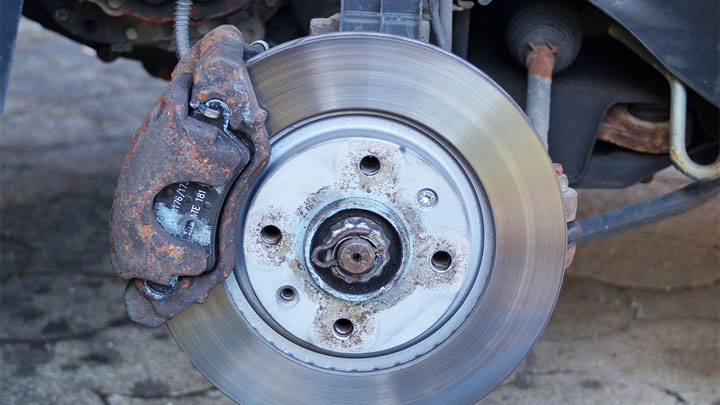
Most often, a car that pulls to the right or left is the result of a malfunctioning caliper in your braking system. In most circumstances, you’ll have a stuck caliper that simply needs to be replaced in order to get your braking system functioning normally again.
Related: Average Brake Caliper Replacement Cost
#2 – Collapsed Brake Hose

One more scenario for a pulling problem to one side would be due to a collapsed brake hose. When you check the hose, it may look fine on the exterior but what you won’t see is whether the liner on the inside is causing a restriction or not. The only way to diagnose this problem is by examining how the car pulls once you apply the brakes.
Usually, if there is a collapsed brake hose then the car will only pull for a few seconds after you apply the brake and then go back to normal afterward. In rare situations, the brake hose will allow fluid to go into the caliper but then it won’t go back to the master cylinder. This means the caliper won’t release fully, causing the pull to stay there.
#3 – Worn Brake Pads

Normally, right and left brake pads on the same axle wear at a similar rate. But if you have uneven brake pad wear for whatever reason (ie: a stuck brake caliper), the brake pads on one side may “grab” more on one side vs the other causing your car or truck to veer towards one direction when applying the brakes.
See Also: Symptoms of Bad Brake Pads
#4 – Worn Suspension Parts
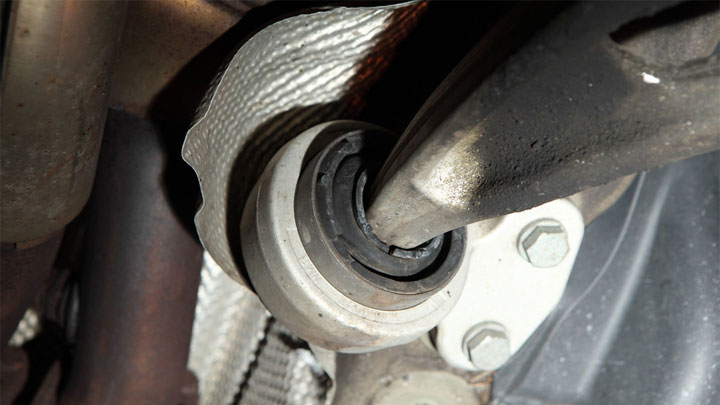
Your suspension plays a role whenever braking as the weight of your vehicle is shifted when slowing down or stopping. For instance, when you have a faulty lower control arm bushing, it may allow the control arm on that corner to move which can result in your car pulling to either the left or right depending on what side the bushing is on.
#5 – Uneven Tire Pressure
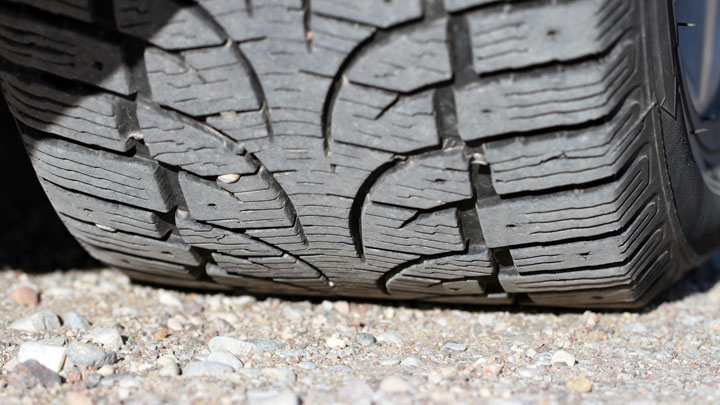
While this cause will mainly be apparent during accelerating or cruising, when you have a tire that’s significantly lower in air pressure than the opposite tire on the same axle, your car will naturally pull toward that side. This will be most noticeable on a front tire.
The reason is that low air pressure effectively changes the diameter and speed of that tire and by doing that, the car ends up being out of alignment. It’s similar to when you get a flat and swap it with a “donut” (space saver) tire. Your vehicle will have a tendency to slightly veer toward that side while driving and braking.
#6 – Faulty Wheel Bearing
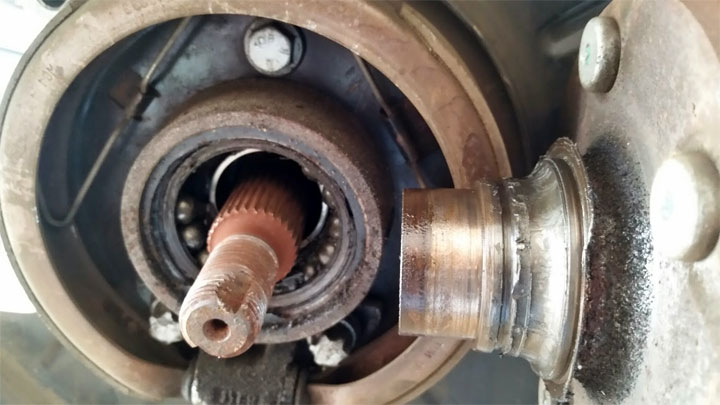
A wheel bearing that has too much play or looseness may cause the brake rotor to become misaligned with the brake caliper (and its pads). When braking, the entire brake pads might not make contact with the rotor as they do on the other side.
This means you’ll have less friction on one side and your vehicle will pull towards one side.
#7 – Mismatched Brake Pads
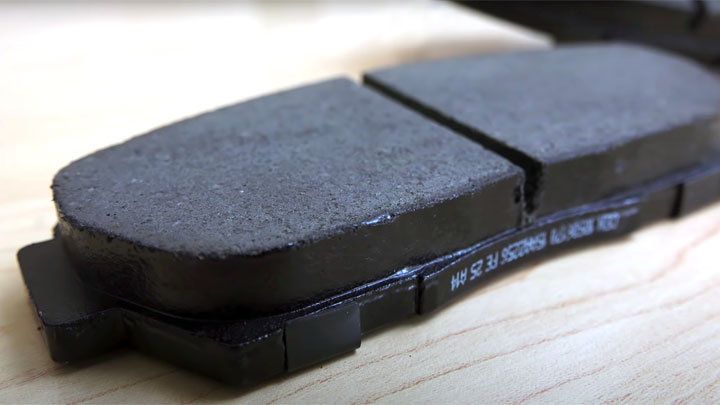
Different types of brake pad material offer a difference coefficient of friction. So if you or the previous owner of your vehicle changed brake pads on one wheel only (don’t do that), there’s good chance the left side brake pads use a different friction material than the right side brake pads.
This will make it so one pair of pads to have more stopping power than the other and cause your car to veer right or left when the brakes are applied.
Self Diagnosis Tips
Before you go to the auto repair shop and pay hundreds of dollars to a mechanic to replace your caliper or another relative parts, you should perform a self-diagnosis on your vehicle first.
You see, the caliper is generally the cause of these pulling problems but it isn’t always the cause. You could be in a situation where you replace the caliper and still experience the pulling problem afterward. That is why you should always check your rear brakes, front brakes, steering components, and suspension components to see if they are causing the pull.
For example, if you have loose suspension components then that could also cause a pull on the steering wheel. So, double check to ensure these components are not loose. Also, check your tire pressure and make sure each tire has the recommended amount of air as suggested by the manufacturer of your vehicle.

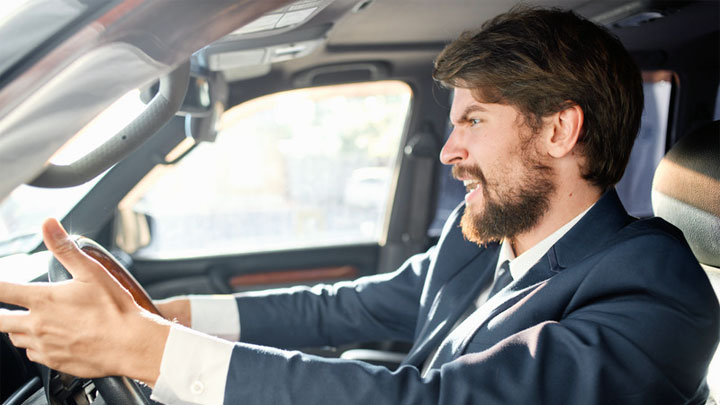

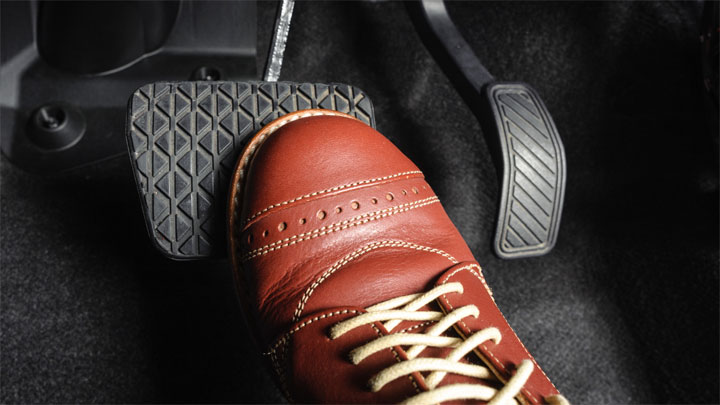
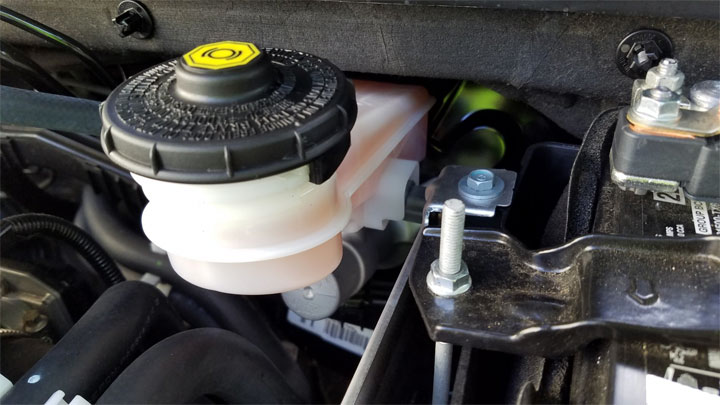
I own a 1982 oldsmobile,,delta 88
6 days ago it started pulling to the left when it came to a stop. The steering wheel shook a little
I would start by checking the brakes on the front left side. How is the pad wear inside to outside? Left to right? If you notice any difference, that should help you narrow down the problem.
While you’re in there, it’s not a bad idea to inspect all four corners of the braking system as well.
The rotors may have excessive runout, causing the pulsing in the steering when you come to a stop. A brake and tire shop should be able to help you insect the braking system.
The car has drums on the front and pulls to the right on first touch of the brakes.
You’re probably going to have to look at the brakes to see what’s wrong. Just a guess, but it sounds like something is uneven between the left and right front shoes.
I just had my brakes changed on the front of my Tahoe and now all of a sudden when then when I had to swim on the bricks last night my truck pulled to the right really hard almost jumping into the next the next one what has happened I’m a single mother of 4 kids and cannot afford to be buying parts I don’t need to be buying did the brakeman do my brakes wrong?? My Tahoe has never done thos until literally right after having new breaks put on the front.
Take it back to the shop and describe the problem in detail. They may have made a simple mistake. Brake jobs are very common, often done quickly, and sometimes people make honest mistakes.
My brakes pull to the left only when moving very slowly (like when coming to a stop) the ABS also sounds at the same time. Vehicle is a 3500 GMC Savana 2014.
Hi I have a 07 Nissan 350z. No abs comes on. With the abs module connected, the brake squeaks when pressing and de-pressing stationary. At high speed, the car swerves. With the abs module disconnected, no sound when braking (park position) but car swerves at high speed. I happened before, I replaced the module. It worked fine for a few months then this happens again. Replaced with used part. What could be the cause?
Does the car swerve under braking or when cruising normally?
My 1994 Nissan D21 pulls to the right when braking heavily. I’ve replaced front pads, rotors, calipers, hoses and master cylinder and it still does it. I can steer my tractor using its independent rear brakes and am wondering whether I have a poorly adjusted rear drum causing a similar effect.
That guess sounds like a good one to me.
I have a 1958 Mercedes and it pulls to the left when braking. I have already checked Tyre pressure. What can possibly cause it
A lot of things could cause that. The alignment could be off, one caliper could be sticking, you could have a bad tie rod, or your suspension bushings could be worn out.
Mt 73 merceds sl 450 pulls to the right. I have replaced the pads , calipers, had to front and n alignment, and new tires. It still pulls only when I apply the brakes
How is the wear on the replacement brake pads? Does the wear pattern match from left to right? If one side is wearing more than the other, it could be a bad brake hose or master cylinder.
Do you notice that it is easier to steer one direction than the other? If you can’t find anything with the brakes, I might check the tie rods and suspension bushings next. Perhaps the wheel bearings as well.
I have a dodge charger. when I brake or hit bumps car. Shift to the right. I kno I need breaks & rotors. So what can this be ???
Check your suspension, suspension bushings, alignment, and tie rods. This is something you’ll want a shop to look at. Many tire shops can do these types of inspections.